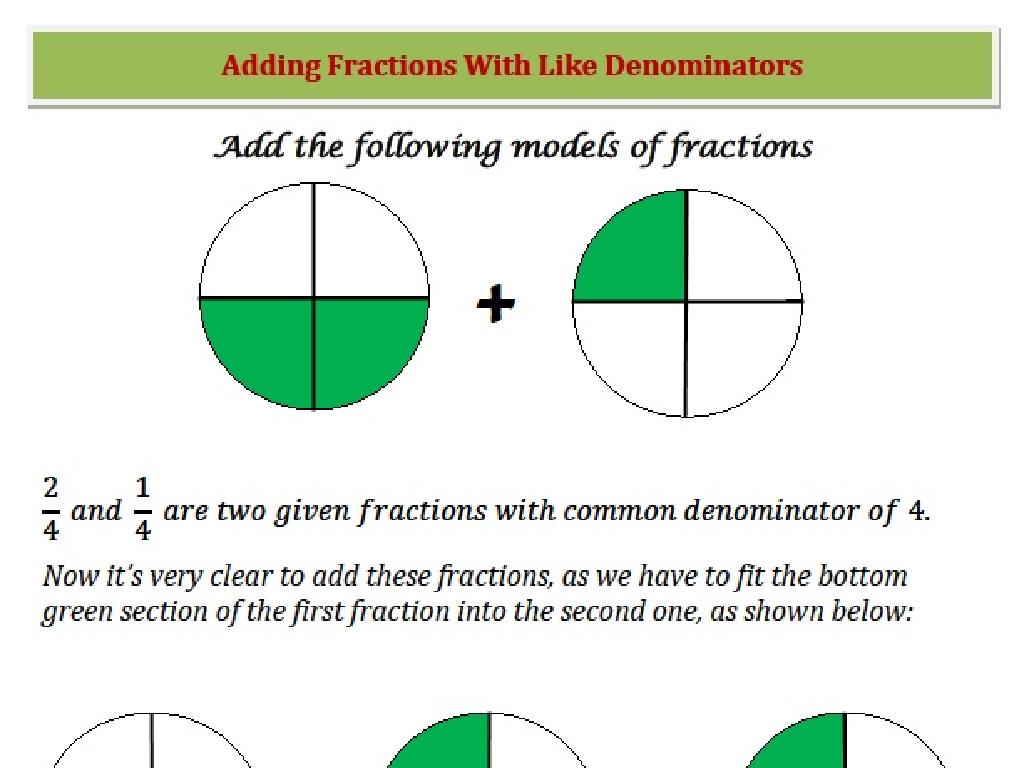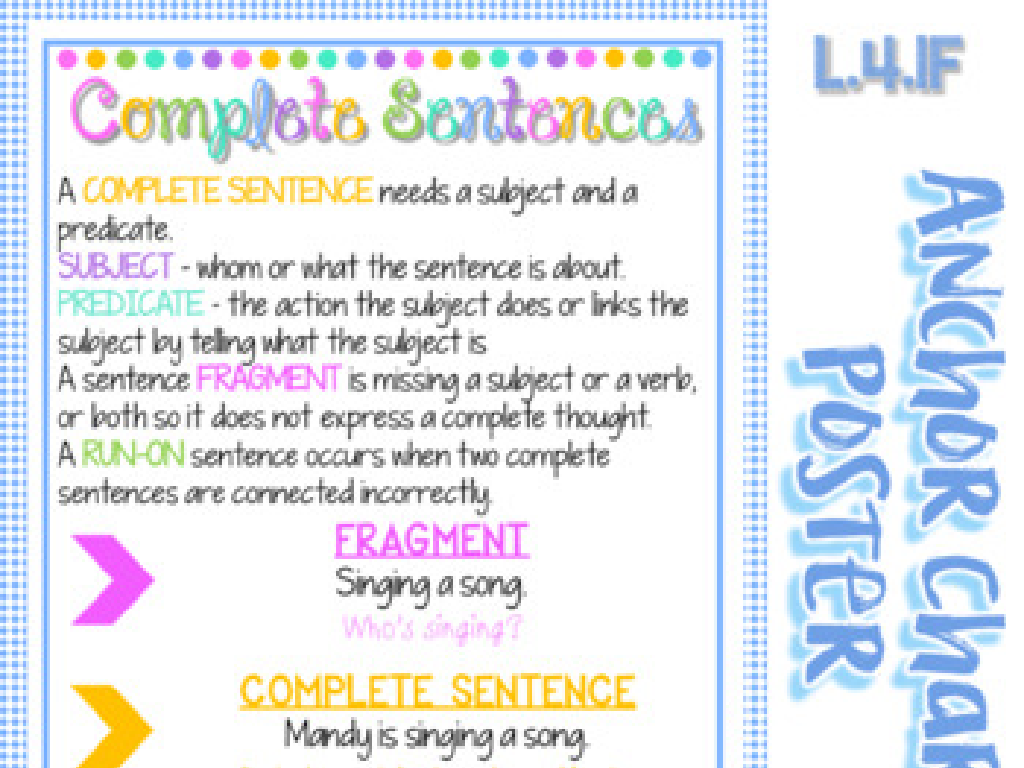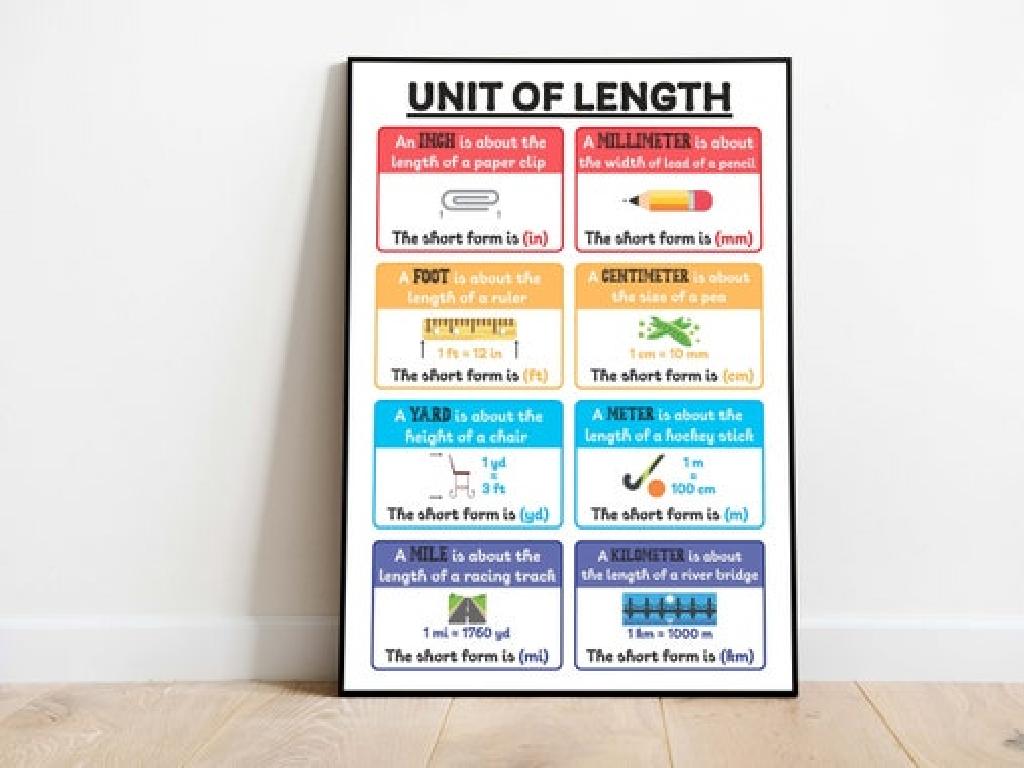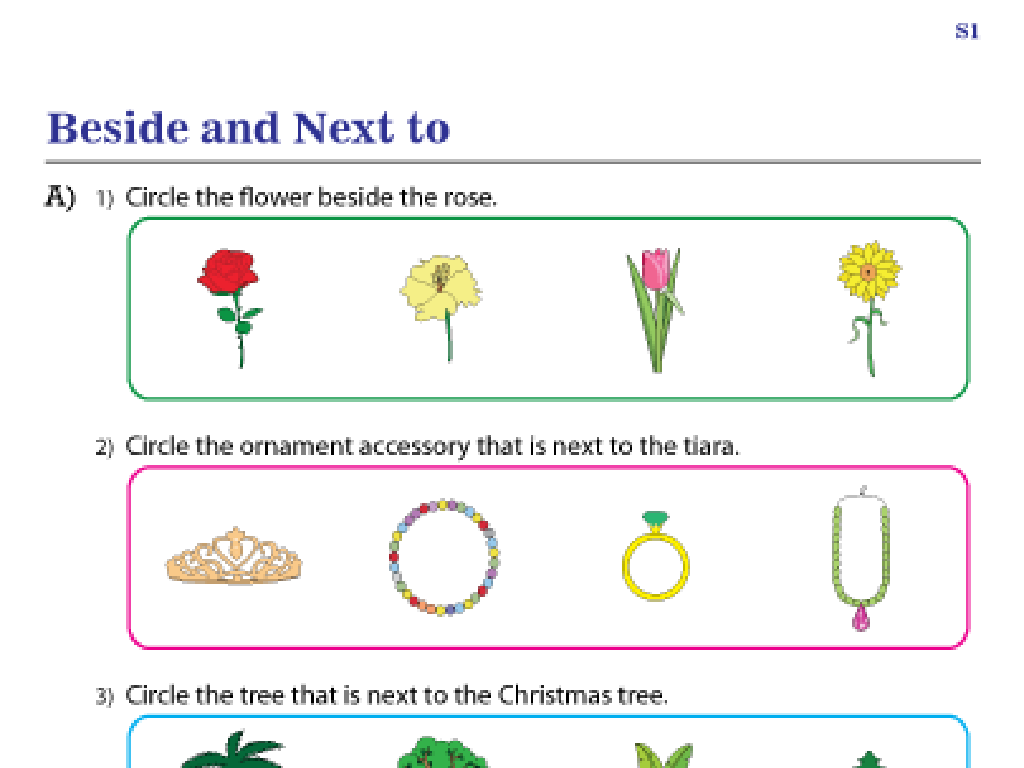Choose The Letter That Matches The Consonant Sound: B, D, J, K, P, T, V, Z
Subject: Language arts
Grade: Kindergarten
Topic: Letter-Sound Associations
Please LOG IN to download the presentation. Access is available to registered users only.
View More Content
Welcome to Letter Sounds!
– Exploring letter sounds together
– Learn sounds: b, d, j, k, p, t, v, z
– Each letter has its own unique sound
– Practice making sounds with letters
– We’ll practice by saying the sounds out loud
– ‘What sound does your name start with?’
– Can you make the sound of the first letter in your name?
|
This slide introduces kindergarteners to the concept of letter-sound associations, focusing on consonant sounds. Start by engaging the children with the idea of playing with sounds, which makes the learning process fun. Go through the sounds of the letters b, d, j, k, p, t, v, z, and encourage the children to repeat after you. Make sure to articulate each sound clearly and give examples of words that start with these letters. Ask the children to practice making the sounds themselves, and then personalize the experience by asking them to make the sound of the first letter of their name. This activity will help them connect the sounds to something familiar. For the next class, prepare a set of activities where children can match letters to pictures based on the initial sounds, reinforcing their understanding of the letter-sound relationship.
Meet the Consonants
– Consonants are not vowels
– Each consonant has a unique sound
– ‘b’ as in ‘ball’, ‘d’ as in ‘dog’
– Explore sounds: b, d, j, k, p, t, v, z
– ‘j’ sounds like ‘juice’, ‘k’ like ‘kite’
– Practice matching sounds to letters
– ‘p’ for ‘pig’, ‘t’ for ‘top’, ‘v’ for ‘van’, ‘z’ for ‘zip’
|
This slide introduces kindergarteners to consonants, emphasizing that they are distinct from vowels and each has its own sound. Start by explaining what consonants are and then focus on the specific sounds made by b, d, j, k, p, t, v, z. Use common words that children are familiar with to illustrate each consonant sound. Encourage the students to repeat the sounds after you and to practice writing the letters while saying the sounds. Plan activities where students match objects or pictures with the correct starting consonant sound to reinforce their learning.
The Sound of ‘b’: Learning Consonant Sounds
– ‘b’ makes a ‘buh’ sound
– Practice saying ‘buh-buh-ball’
– Repeat after me: ‘buh-buh-ball’
– Find words starting with ‘buh’
– Look around, what objects start with ‘buh’?
– Share your ‘buh’ words in class
– We’ll listen to everyone’s words!
|
This slide introduces the consonant sound made by the letter ‘b’. Start by demonstrating the ‘buh’ sound clearly and have the children echo it back. Use the word ‘ball’ as an example and encourage the children to repeat the sound in unison. Then, engage the class in a scavenger hunt activity where they look for items or pictures that start with the ‘buh’ sound. Finally, create a sharing time where each child can say their word out loud to the class. This reinforces their understanding of the sound and its association with the letter ‘b’.
The Sound of ‘d’: Duh-duh-dog!
– ‘d’ makes the ‘duh’ sound
– Like in ‘dog’, ‘duck’, and ‘doll’
– Practice saying ‘duh-duh-dog’
– Repeat after me: ‘duh-duh-dog’
– Find words starting with ‘duh’
– Can you think of other words with ‘duh’?
– Listen for ‘duh’ in words
– We’ll listen and point to ‘duh’ words
|
This slide introduces the consonant sound made by the letter ‘d’. Start by demonstrating the ‘duh’ sound and encourage the children to mimic the pronunciation. Use familiar words like ‘dog’, ‘duck’, and ‘doll’ to reinforce the sound. Engage the class by asking them to repeat ‘duh-duh-dog’ and to find other words that start with the ‘duh’ sound. Incorporate a listening activity where you say words out loud and students point out or say ‘duh’ when they hear the ‘duh’ sound at the beginning of a word. This interactive approach helps solidify their understanding of letter-sound associations.
Matching Sounds to Letters
– Match letters with sounds
– Look at pictures for clues
– Pictures will help us find the sound
– Listen to the first sounds
– ‘b’ as in ‘ball’, ‘d’ as in ‘dog’
– Choose the correct letter
– Is it ‘k’ for ‘kite’ or ‘t’ for ‘top’?
|
This slide is designed for a fun and interactive class activity to help Kindergarten students associate letters with their corresponding sounds. Start by explaining that every letter has a unique sound. Show pictures of familiar objects and have the students listen carefully to the first sound of each word. Ask guiding questions to help them identify the correct letter that matches the sound. For example, when showing a picture of a ball, emphasize the ‘b’ sound and ask the students to choose the letter that makes that sound. Repeat this with different pictures and sounds. Encourage participation and praise correct matches to reinforce learning. Prepare a set of pictures and corresponding letters for the activity, ensuring a mix of all the consonant sounds mentioned.
Practice Time: Sound and Letter Matching Game!
– We’re going to play a sound matching game
– Listen to the sound I make
– Find the letter that matches the sound
– Is it ‘b’, ‘d’, ‘j’, or another letter?
– Get ready to have some fun!
|
This slide introduces a playful, interactive game where students will practice matching consonant sounds to their corresponding letters. As the teacher, you will make a consonant sound, and the students will identify the letter that represents that sound. Prepare a list of words that start with the consonants b, d, j, k, p, t, v, z. For example, ‘ball’ for ‘b’, ‘dog’ for ‘d’, ‘jump’ for ‘j’, etc. Make sure to articulate the sounds clearly and encourage the students to listen carefully before choosing the letter. You can use props or flashcards to make the activity more engaging. Have alternative activities ready for students who may grasp the concept quicker, such as drawing objects that start with the given sounds or forming simple words using letter tiles.
Sound Hunt Activity
– Let’s go on a sound hunt!
– Find objects starting with b, d, j, k, p, t, v, z
– Look for ‘ball’, ‘doll’, ‘jacket’, ‘kite’, ‘pen’, ‘top’, ‘van’, ‘zip’
– Work in teams to discover items
– See how many objects we can find!
|
This class activity is designed to help Kindergarten students associate consonant sounds with letters by actively searching for objects that start with the sounds of b, d, j, k, p, t, v, z. Divide the class into small groups and assign each group a set of letters to focus on. Encourage them to look around the classroom and collect objects that start with their assigned sounds. This activity promotes teamwork and engages students in a fun, interactive way to reinforce their understanding of letter-sound associations. Possible variations of the activity could include a timed challenge, drawing items instead of collecting them, or even extending the hunt to outside the classroom if feasible.
Great Job on Learning Sounds!
– Amazing work learning new sounds!
– Listen for sounds in words
– When you hear ‘b’, think of ‘ball’
– Time for a fun applause!
– Keep practicing at home
– Try finding sounds in your favorite book
|
This slide is a celebration of the students’ achievements in learning new consonant sounds. It’s important to praise their efforts to keep them motivated. Encourage them to listen for the sounds they’ve learned in everyday words, which will help reinforce their understanding. The round of applause is a fun activity to end the lesson on a high note. As homework, suggest that they practice by listening for these sounds when they read or talk with their family, turning it into a game to see how many ‘b’, ‘d’, ‘j’, ‘k’, ‘p’, ‘t’, ‘v’, ‘z’ sounds they can find.






